Occupational environment monitoring at the factory producing transformers
99,000 ₫
Note: The above price is calculated for one sample. Prices may vary depending on the area of the environment to be monitored and market fluctuations. For more accurate pricing support, please refer to the price list or contact our consulting staff directly.
Workplace environment monitoring for a transformer production factory is a session of collecting, analyzing, and evaluating factors at the workplace that may be harmful to workers’ health.
Table of Contents
Toggle1. Overview of the Transformer Manufacturing Factory
a. What is a Transformer Manufacturing Factory?
Transformer manufacturing factory is a production facility specializing in the manufacture of transformers. A transformer is an electrical device used to convert voltage from one level to another. It is commonly used in electrical systems to regulate and balance voltage for different circuits.
In a transformer manufacturing factory, production processes include component fabrication, assembly, inspection, and testing. Transformer production requires high precision and adherence to strict technical standards to ensure product quality and safety.
The manufacturing steps may include metalworking, coil fabrication, insulation, assembly, and quality inspection. Advanced equipment, machinery, and technology are used to ensure the performance and reliability of the final product.

b. Production stages in the transformer manufacturing factory
In a transformer manufacturing factory, the typical production process includes the following stages:
- Component fabrication: First, the main components of the transformer are manufactured, including the transformer core, coils, stack assemblies, and other parts. This process usually involves metalworking, cutting, bending, welding, grinding, and electroplating.
- Assembly: Once the components are fabricated, the assembly stage begins. The parts are assembled together to form the main structure of the transformer. Components are fastened using screws, bolts, or other techniques to ensure stability and strength.
- Quality inspection and testing: After assembly, transformers undergo quality inspection and testing to ensure proper operation and compliance with standards. This includes checking technical parameters such as input/output voltage, load capacity, efficiency, insulation, stability, and protection features.
- Finishing and packaging: Once transformers pass inspection and testing, final steps like cleaning, maintenance, and surface painting are performed. The transformers are then packaged in protective materials to ensure safety during transportation and storage.
- Shipping and delivery: Finally, the transformers are ready for shipment and delivery to customers. This process includes transportation, labeling, invoice management, and export procedures if necessary.

c. Types of machinery used in the transformer manufacturing factory
In a transformer manufacturing factory, various machinery and equipment are used for different production stages. Some commonly used machines include:
- Metal cutting machines: Used to cut and process metal sheets into required sizes and shapes for transformer components.
- Metal bending machines: Used to bend metal sheets to form complex shapes for transformer parts.
- Welding machines: Used to weld metal components together to create the main transformer structure.
- Coil winding machines: Used to wind and shape copper or aluminum coils for transformers. These machines often have automated functions to ensure high precision and efficiency.
- CNC machines: Use computer numerical control technology to process components with high accuracy. CNC machines include milling machines, lathes, grinders, and drills for transformer metal parts.
- Pressing, molding, and insulation machines: Used to press and mold transformer parts from materials like aluminum, cast iron, or plastic. These machines also perform insulation processes to ensure electrical and water resistance.
- Testing and inspection machines: Include equipment to measure and test voltage, load capacity, efficiency, insulation, and protection features. These machines ensure that transformers meet quality standards and technical requirements.

d. Occupational diseases that workers may encounter in the transformer manufacturing factory
During work in a transformer manufacturing factory, workers may be exposed to certain occupational diseases related to their work environment. Some common occupational diseases include:
- Chemical-related diseases: Workers may come into contact with chemicals such as solvents, cleaning agents, dyes, and antioxidants. Long-term or improper exposure may cause skin inflammation, allergies, respiratory issues, and liver damage.
- Noise-related diseases: Machinery operation in transformer production can produce continuous high-intensity noise, causing hearing loss, stress, insomnia, and general health effects.
- Dust and particulate-related diseases: Metalworking processes may generate dust and fine particles. Inhaling these can cause respiratory issues, such as pneumonia, asthma, and chronic lung disease.
- Heat-related diseases: Working with thermal equipment, such as welding tools, may expose workers to high temperatures. Prolonged exposure can cause burns, skin damage, and other heat-related health problems.
- Physical workload-related diseases: Transformer factory jobs may require heavy lifting, working in awkward positions, or prolonged standing. Improper handling can lead to musculoskeletal injuries, fatigue, and spinal issues.
To prevent occupational diseases, safety and health measures should be applied, including using personal protective equipment, ensuring proper ventilation and exhaust in the work environment, following safe work procedures, providing occupational health and safety training, and performing regular health checks to detect potential health issues early.

e. Common types of transformers on the market
There are many common types of transformers on the market, usually classified based on their purpose and capacity. Some of them include:
- Traditional Transformer (TF): The most widely used transformer in electrical systems. It converts voltage from high to low or vice versa using coils wound on an iron core.
- Autotransformer: Uses a single coil with a common winding for input and output, reducing cost and size.
- Explosion-proof transformer: Designed for hazardous environments with fire or explosion risk, featuring safety measures to reduce such risks.
- Isolation transformer: Used to isolate and protect electrical equipment from static electricity and unwanted voltage, preventing electrical interference.
- Frequency transformer: Converts voltage frequency for applications requiring different frequencies.
- Automatic transformer: Used in automatic electrical systems or control systems for automatic voltage conversion between different levels.
2. Overview of Occupational Environment Monitoring Services
a. What is occupational environment monitoring in a transformer manufacturing factory?
Occupational environment monitoring (or labor environment measurement) in a transformer manufacturing factory involves collecting, evaluating, and analyzing indicators of the labor environment to promptly implement measures that minimize environmental hazards to workers’ health and prevent occupational diseases. Occupational environment monitoring is mandatory for transformer manufacturing factories.
It plays a crucial role in protecting and improving workers’ health, as workers are the primary resource of a company and directly generate profit. Continuous exposure to risks and occupational hazards beyond allowed standards can harm workers’ health and cause occupational diseases.
REGISTER FOR OCCUPATIONAL ENVIRONMENT MONITORING SERVICE
b. Nam Viet’s occupational environment monitoring program
Nam Viet’s occupational environment monitoring program is developed by engineers specializing in occupational safety and environmental protection. Aimed at ensuring workers’ health and safety, the program uses modern measurement methods to monitor air quality, water quality, microclimate, physical factors, dust, and more. It is essential for maintaining a safe working environment and protecting workers’ health.
Additionally, the program contributes to research and development of solutions to improve labor environment quality. With the dedication and professionalism of Nam Viet’s monitoring experts, this exclusive program represents a breakthrough in occupational safety and environmental management in Vietnam.

c. Standardization in occupational environment measurement procedures
Standardization in Nam Viet’s monitoring procedures is crucial for ensuring measurement accuracy and reliability. The program follows recognized standards and procedures from the Ho Chi Minh City Department of Health, ensuring data can be reliably used for workplace environment assessments and decisions to improve worker safety.
These standardized procedures are executed by highly qualified monitoring specialists with years of experience, allowing managers and experts to trust results from An Toan Nam Viet for accurate and valuable decisions regarding workers’ health and the environment.
Through standardized measurement procedures, Nam Viet demonstrates its commitment to ensuring a safe working environment and protecting workers’ health, while contributing to improving occupational safety and environmental management in Vietnam.
d. Reporting results of occupational environment monitoring in transformer factories
Monitoring results are prepared according to Form No. 04, Appendix III issued with Decree 44/2016/ND-CP and prepared in 2 copies: one for the labor facility that signed the monitoring contract and one for the monitoring organization.
Monitoring results are stored indefinitely according to legal regulations.

e. Monitoring frequency according to legal regulations
According to Clause 2, Article 18 of the Law on Occupational Safety and Hygiene 84/2015/QH13, employers must organize occupational environment monitoring to evaluate harmful factors **at least once a year**.
f. Deadline for submitting monitoring reports according to legal regulations
Reports must be submitted before December 31 each year. Enterprises must submit monitoring results to the Department of Health at the locality where their headquarters and workers are located.
When changes occur in technology, production processes, or facility upgrades that may introduce new harmful factors, enterprises must update occupational hygiene records regarding hazardous factors requiring monitoring.
g. Penalties for violations of occupational environment monitoring by employers
According to Article 27 of Decree No. 12/2022/ND-CP dated 17/01/2022 on administrative penalties in labor, social insurance, and Vietnamese workers working abroad under contracts:
- Clause 2: Fines from 2,000,000 – 5,000,000 VND for employers who fail to publicly disclose monitoring results to workers at the monitored location and management of hazardous factors immediately after results are available.
- Clause 3: Fines from 20,000,000 – 40,000,000 VND for employers who fail to conduct monitoring to control hazards to workers’ health as required by law.
- Clause 4: Fines from 40,000,000 – 60,000,000 VND for employers who collude with monitoring organizations to commit fraud in occupational environment monitoring but not to the extent of criminal liability.
3. Harmful Environmental Factors for Workers in Transformer Manufacturing Factories
Harmful environmental factors that may exist in a transformer manufacturing factory include:
- Noise: Excessive noise from operating equipment in the factory can cause stress, reduced concentration, and damage to workers’ hearing.
- Metal dust and fumes: Machining and welding processes can generate metal dust and fumes, such as heavy metals, asbestos, iron dust, and welding smoke. If not properly controlled, these can harm the respiratory system and cause health issues such as pneumonia, lung diseases, and skin problems.
- Chemicals: The use of chemicals such as solvents, cooling solutions, and cleaning agents in transformer manufacturing can be hazardous if not properly handled and stored. These substances may irritate the skin, eyes, and respiratory tract and can adversely affect internal organs.
- Heat exposure: Transformer production processes can create high-temperature environments, particularly during welding and casting operations. Workers face risks of burns, explosions, and heat-related illnesses.
- UV radiation: Processes such as painting and surface coating may require UV exposure for curing or hardening materials. UV radiation can damage the skin, eyes, and respiratory system if proper protection is not used.
REGISTER FOR OCCUPATIONAL ENVIRONMENT MONITORING SERVICE
4. Measures to Improve the Working Environment in Transformer Manufacturing Factories
To improve the working environment in transformer manufacturing factories and protect workers’ health, the following measures can be applied:
- Noise control: Use noise reduction equipment such as ear protection and soundproof walls to reduce noise in work areas. Provide training and implement safety measures to protect workers’ hearing.
- Metal dust and fume management: Install effective dust extraction and ventilation systems to remove metal dust and fumes during production. Ensure workers use personal protective equipment such as masks, gloves, and protective clothing to avoid direct exposure.
- Chemical management: Ensure chemicals are used and stored safely in compliance with occupational safety regulations. Provide adequate information and training to workers on the chemicals used and necessary personal protective measures.
- Heat safety: Provide personal protective equipment such as helmets, fire-resistant clothing, and heat-resistant gloves to protect workers from burns and explosions. Ensure proper temperature management and ventilation systems to minimize heat exposure in the workplace.
- UV protection: Use personal protective equipment such as UV-blocking goggles, protective clothing, and sunscreen to safeguard skin and eyes from UV exposure during painting and surface coating processes.
- Training and education: Provide comprehensive occupational safety and health training, including safe working procedures, correct use of personal protective equipment, and awareness of potential hazards.
- Regular monitoring: Conduct occupational environment monitoring in the factory periodically to collect and analyze harmful factors affecting workers, then adjust and reduce risks to prevent occupational diseases.
5. Benefits of Periodic Transformer Manufacturing Factory Monitoring
An Toan Nam Viet provides excellent benefits to businesses using occupational environment monitoring services in accordance with Decree 44/2016/ND-CP regarding the management and control of harmful factors in the workplace affecting workers.
- Businesses can proactively control harmful factors in factories.
- Receive consultancy and recommendations for measures to minimize hazards and improve working environment quality.
- Indirectly protect human resources, a key factor in business development.
- Reduce the impact of occupational diseases on workers’ health, thereby reducing future medical costs.
- Improved worker health enhances product quality and maintains production output.
- Ensure compliance with occupational safety regulations, avoiding legal risks.
- Enhance credibility and professionalism, elevating the brand reputation of the business.
An Toan Nam Viet’s environmental monitoring service is a solution to minimize occupational disease risks and contribute to a clean, high-quality working environment.

6. National Occupational Environment Monitoring Center
An Toan Nam Viet Occupational Environment Monitoring Center is a professional unit specializing in monitoring and measuring workplace environmental quality across all provinces of Vietnam. With a team of experienced monitoring specialists, the center uses modern measurement equipment to ensure accuracy and reliability.
In addition to providing monitoring services, the center supports clients in planning, addressing, and tracking occupational environmental issues. With the motto “customer-centered,” the center focuses on client satisfaction, meeting all needs, and committing to provide the best solutions for businesses.
REGISTER FOR OCCUPATIONAL ENVIRONMENT MONITORING SERVICE
With investments in technology, equipment, and human resources, An Toan Nam Viet’s monitoring center has become one of the most reputable units in occupational environment monitoring in Ho Chi Minh City, with objectives as follows:
- We value brand reputation and the quality of our service products.
- We provide clients with the best and most suitable solutions possible.
- With a team of experienced Masters and Engineers dedicated to environmental protection and business benefits.
- Clients choosing An Toan Nam Viet Environmental Monitoring will receive professional service from experts in the field, along with the best cost incentives.
The occupational environment monitoring process at An Toan Nam Viet includes the following basic steps:
- Before monitoring, we ensure all equipment used is calibrated and adjusted in compliance with legal regulations.
- Follow the complete occupational environment monitoring procedures as committed to the Department of Health.
- Report monitoring results honestly to the employer.
- If monitoring results indicate unsafe conditions for workers, An Toan Nam Viet will support remediation, and the enterprise will take actions such as:
- Implement measures to improve working conditions to minimize harmful exposure and prevent occupational diseases.
- Organize health examinations to detect occupational and work-related diseases early in areas with unsafe working environments.
- Provide material compensation to workers in accordance with labor law regulations.

7. Occupational Environment Monitoring Service Pricing
To help businesses conduct professional and effective occupational environment monitoring, An Toan Nam Viet provides clients with a detailed pricing list for occupational environment monitoring services with quality and reasonable costs.
- Our pricing list provides detailed information about the costs of the monitoring services offered, including travel, measurement, analysis, and report preparation. Clients can be fully confident in the accuracy and reliability of the monitoring results we provide.
- We commit to offering competitive and fair pricing in the market and are always ready to promptly and professionally answer any service-related inquiries.
- With An Toan Nam Viet’s pricing list, clients can easily select service packages that suit their needs. We guarantee the highest satisfaction with professional service quality.
No comments yet

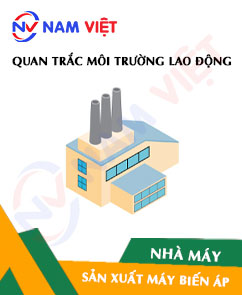
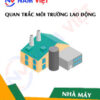
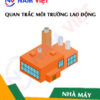
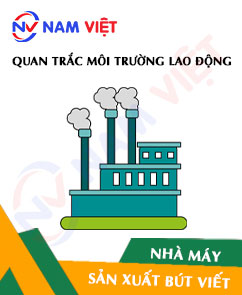


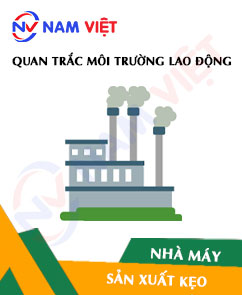


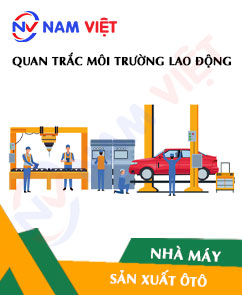

Review Occupational environment monitoring at the factory producing transformers
There are no reviews yet.